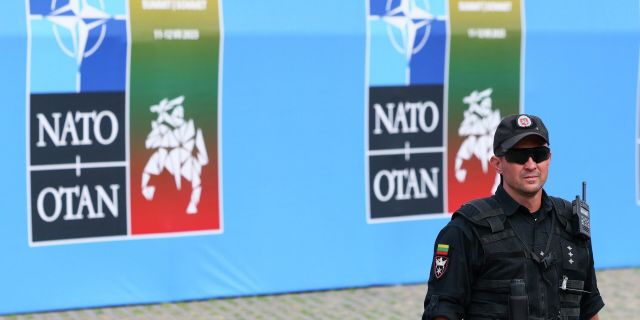Nihon Keizai: NATO countries faced difficulties in increasing military spending
Only a small part of the countries have brought military spending to the target level of 2% of GDP, writes Nihon Keizai. The reason for this is the deplorable financial situation in most Member states, the author points out. Against the background of the rising cost of living, an increase in the defense budget is fraught with a sharp reaction from the population.
Financial difficulties due to the pandemic and inflation.
Many North Atlantic Treaty Organization countries have failed to meet the target of increasing defense spending to at least 2% of GDP. According to the alliance's estimates, in 2023 only about a third of the states (11 countries) will exceed the level of 2%. NATO members are on the path of increasing military budgets, but the barriers to flexible expansion of costs are high.
The costs of maintaining its communications network and maintaining the early Radar Detection and Control (AWACS) aviation complex are covered by NATO from the general budget, which is formed by interest deductions from the participants. In addition, each state sets a goal to increase defense spending to at least 2% of GDP.
At the July summit of the alliance, a new ceiling was agreed — at least 2%, although previously the upper limit was exactly this number. The leadership called on NATO members to join forces in strengthening defense capabilities and deterrence capabilities, for example, by increasing national spending and purchasing appropriate equipment.
According to estimates recently published by NATO, 11 out of 31 members of the organization will spend more than 2% of GDP on defense in 2023. The annual report, published in March, indicated that as of 2022, seven countries have reached this indicator. In 2023, more than 2% will be allocated by the USA, Great Britain, Poland, Greece, Estonia, Lithuania, Finland and Romania, Hungary, Latvia and Slovakia.
In addition to the United States and Great Britain, costs have increased markedly in countries close to Russia, that is, the Scandinavian and Baltic states. This suggests that they feel a threat coming from Moscow in connection with its special operation in Ukraine, so they are in a hurry to strengthen their own defense capability. Sweden, which intends to join the North Atlantic Alliance by the end of the year, is also considering increasing spending to 2% of GDP and above.
In turn, in France, Germany and Turkey, this indicator is below 2%, it is 1.9%, 1.57% and 1.31%, respectively. The Russian special operation in Ukraine began during the recovery of world economies after the pandemic of the new coronavirus. People are suffering because of the sharp rise in the cost of energy and food, which makes it difficult to flexibly increase military spending taking into account public opinion.
Berlin intends to reach the target of 2% of GDP in 2024. His first National Security Strategy, developed in June, clearly states that in a few years the country's military budget will grow to 2% of GDP on average. Chancellor Scholz also promised to do this in his parliamentary speech.
Since the late 1990s, German defense spending has not exceeded 1% of GDP, but the conflict in Ukraine has led to a historic change in German policy.
In NATO, most believe that multiplying costs is necessary to solve new problems. The official representative of the alliance emphasizes that the growth of defense funding is important for the creation of structures in new areas of security, such as cybernetics, space and disinformation. Russia and China are actively investing in these areas, and there are concerns that NATO is lagging behind them.
Moreover, there is concern that the dissatisfaction of the United States, which allocates significant funds to defense, will increase if the spending of individual NATO member countries does not increase. For example, former American President Donald Trump once called for raising the target to 4% of GDP, because he did not approve of the low burden that fell on European powers.
At the same time, the figure of 2% of GDP does not quite correspond to the real security needs. On average, the military expenditures of the Member States in the period from 1991 to 2003 amounted to 2.05%. There is an opinion in the alliance that such a high indicator is not directly related to the level of contributions.
The financial situation in the member countries of the organization has worsened as a result of the elimination of the consequences of the pandemic and in connection with other events. Raising taxes or reducing other budget items can cause a sharp reaction from the population, so it will not be so easy to significantly increase military spending alone.
Japan, which has to prepare for unforeseen situations in Taiwan, cannot ignore the question of how to guarantee financial resources when increasing the defense budget. A common task for all countries is to ensure such a level of costs that would correspond to the conditions of international security. At the same time, it is necessary to carefully explain the situation to the population and seek their understanding.
Author: Takashi Tsuji

